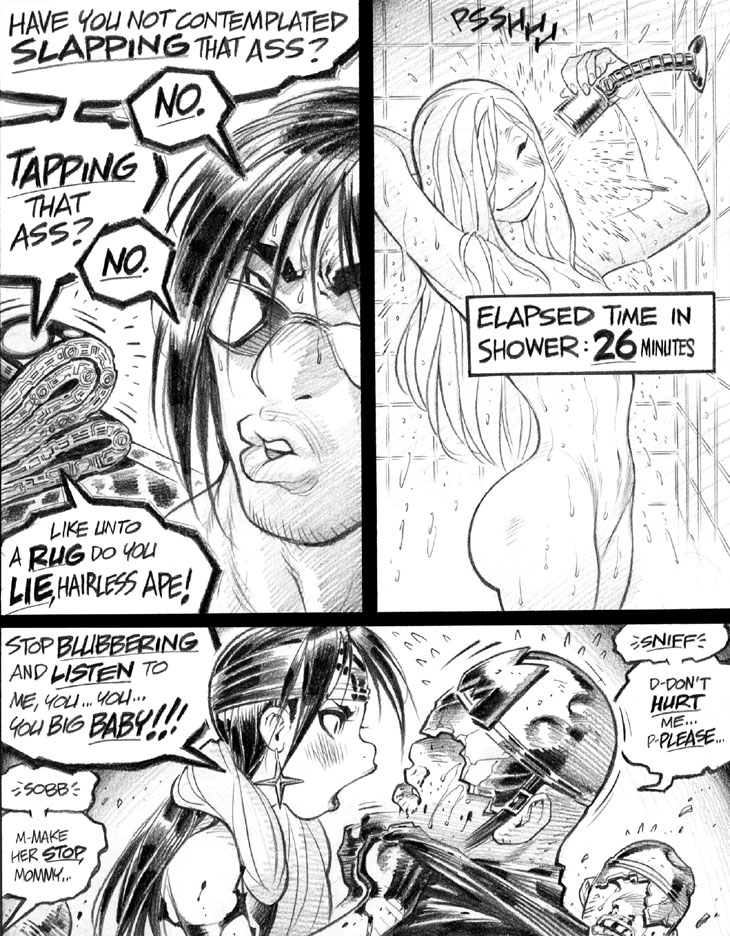Today, part 3 of an ongoing Twitter rant about the issue of comics creators allotting more “developmental time”—or “dev time,” in game-design speak—to their work. Last time, I detailed how too much “dev time” can, alas, be the proverbial devil’s candy for undisciplined sorts like myself. Now, onward:
Ah, but I do think a particular form of “dev time” would be valuable for comics creation—but I wouldn’t allot it to preplanning or—ughh—“worldbuilding.” Rather, comics could be improved considerably if—in some magical alt universe—we could invest more “dev time” in the actual work stages.
Example: Most artists spend maaaybe a day or two roughing out and/or thumbnailing their pages, then spend 30+ days drawing the damn things. The layout stage is critical to both the quality of the final comic and one’s improvement as a storyteller, but we invest little time in it. Spending only a few hours on roughs but hundreds of hours on pencilling, inking and coloring finished pages shortchanges your layout skills. Screw messing around with design prepwork or the like—sink any “dev time” you have into refining and experimenting with your page layouts.
I recommend, after you’ve finished an comic’s page roughs, investing your worktime into going back and “re-laying out” the book differently. The 2nd—or even 3rd?—time around, thumbnail a story page using more panels—break up an existing image into smaller narrative elements. Or, hell, if your comic page had a high panel count, try combining multiple teeny panels into larger, more cohesive layouts. If your page is a bunch of disconnected close-ups, see if you can’t lay out a version where multiple characters are visible in one panel.
Imitate the layout style of your favorite artists, especially ones with bold and innovative approaches to visual storytelling. Did you follow Eddie Campbell’s maxim that every comic page should feature a full-figure shot of at least one character? Well, try that out. The 2nd time around, try a fixed page grid—the Watchmen nine-panel (3X3) layout, or the “Kirby six” (2X3), for example. Or go far away from grids with a “vignette” layout style—that is, try a page that uses free-floating images without fixed panels or borders.
The point: Doubling up on the brief but critical worktime you spend on your page layouts is an easy way to “level-up” your narrative skills. After a year’s work, you’ll have finished drawing, say, 10 issues worth of comics pages—but you’ll have laid out 20 issues of storytelling. Your, ah, “mad storytelling skillz" will be twice those of Alternate Timeline Artist You, who couldn’t be arsed to mess with another draft.
On our next Empowered commentary, thrill to the exciting conclusion of this comics-technique rant, folks!
-Adam Warren

